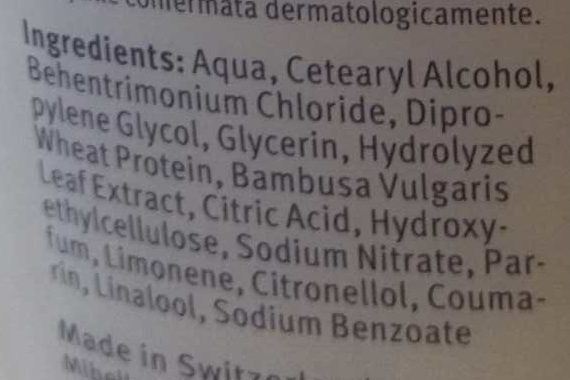Behentrimonium chloride
Behentrimonium chloride is a waxy substance generated from the seeds of the mustard plant Brassica rapa olifera, generally known as canola or rapeseed. Yellow flowers are characteristic of the plant. A quaternary ammonium Behentrimonium chloride has straight chain alkyl trimonium.
1. What is Behentrimonium chloride?
Behentrimonium chloride is a waxy substance generated from the seeds of the mustard plant Brassica rapa olifera, generally known as canola or rapeseed. Yellow flowers are characteristic of the plant. A quaternary ammonium Behentrimonium chloride has straight chain alkyl trimonium.
1.1. Physical and Chemical properties of Behentrimonium chloride:
Behentrimonium chloride is white flakes appearance and has alcohol like odor. Molecular weight of this chemical is 404.16 g/mol. Melting point is 850C, density is 0.9 g/cm3 at 200C. This chemical is volatile when mixed with 15% ethyl alcohol. Behentrimonium chloride is partly soluble in water and soluble in Isopropylene. Optimize pH range is 6-8.
1.2. Origin of Behentrimonium chloride:
Canola oil is used to make Behentrimonium chloride. Screw presses or expellers are used to press canola seeds after they have been heated. To remove the leftover oil, solvents are frequently added to the remaining “presscake.” A steam and heat method is used to extract the solvent from the oil. [10] Then, in 30 percent dipropylene glycol, Behentrimonium chloride is produced by quaternizing behenyl dimethylamine with methyl chloride.
1.3. Uses of Behentrimonium chloride:
Behentrimonium chloride is an emulsifying agent as well as an antistatic and hair conditioning agent. It’s a form of trimonium that causes cationic chains to attract anionic charges in skin and hair protein structures, resulting in a conditioning action. It doesn’t dissolve in water, therefore it stays on the hair, making it a common ingredient in rinse-off hair conditioners. Hundreds of personal care products include Behentrimonium chloride, including conditioner, mousse, hair coloring, bath soaps, moisturizers, and other goods.
1.4. Alternatives to Behentrimonium chloride:
Stearalkonium Chloride and Behentrimonium Methosulfate may be used as an alternatives of Behentrimonium chloride. Stearalkonium Chloride is used in the formulation of a number of cosmetics and personal care products, particularly hair care products such as rinses, conditioners, setting lotions, and bleaches. Stearalkonium Chloride is mostly used in hair care products as an antistatic component. Antistatic compounds reduce the tendency of cosmetic raw materials or human body surfaces (skin, hair, etc.) to accumulate an electrical charge, reducing “fly away” hair in dry weather. Positively charged stearalkonium chloride attracts and binds negatively charged proteins. This feature makes Stearalkonium Chloride a beneficial element in hair products, since it improves luster, feel, and wet/dry combing. Stearic acid, a fatty acid present in both plants and animals, is used to make it.
Behentrimonium Methosulfate, also known as BMS, is a quaternary ammonium compound synthesized from rapeseed oil, according to the scientific definition. It also helps to provide greater glide in conditioners, shampoos, and lotions when used in these products. This is the most important for women with a lot of curls, like me. It is the ideal ingredient for shampoos and hair conditioning products, according to Natural Well Being, because it has the power to hydrate and condition hair from the roots. It can penetrate all the way to the hair shaft, making hair healthier and easier to comb and maintain.
1.5. Safety and storage:
The Cosmetics Chemical Review determined that the ingredient is safe for cosmetic usage. According to Whole Foods’ body care quality guidelines, the ingredient is allowed. Furthermore, Behentrimonium chloride (25 percent in cetearyl alcohol) has been reported to be an eye irritant, despite the fact that multiple studies have shown that the component is not a significant skin irritant. It is biodegradable, stable under normal conditions, and incompatible with strong oxidizing agents. Avoid coming into touch with your eyes. After handling, carefully wash your hands. When handling this material, as with all chemicals, good industrial hygiene procedures should be observed. Inhaling vapor or mist might irritate the respiratory system and make you feel dizzy. Avoid getting too cold or too hot. Handle or store away from open flames, heat, or other ignite sources. Close the jar tightly and store it somewhere cold and well-ventilated. Employees must maintain proper personal hygiene by washing exposed skin parts multiple times each day and laundering contaminated clothing before reusing it.
You might also like


No Comments